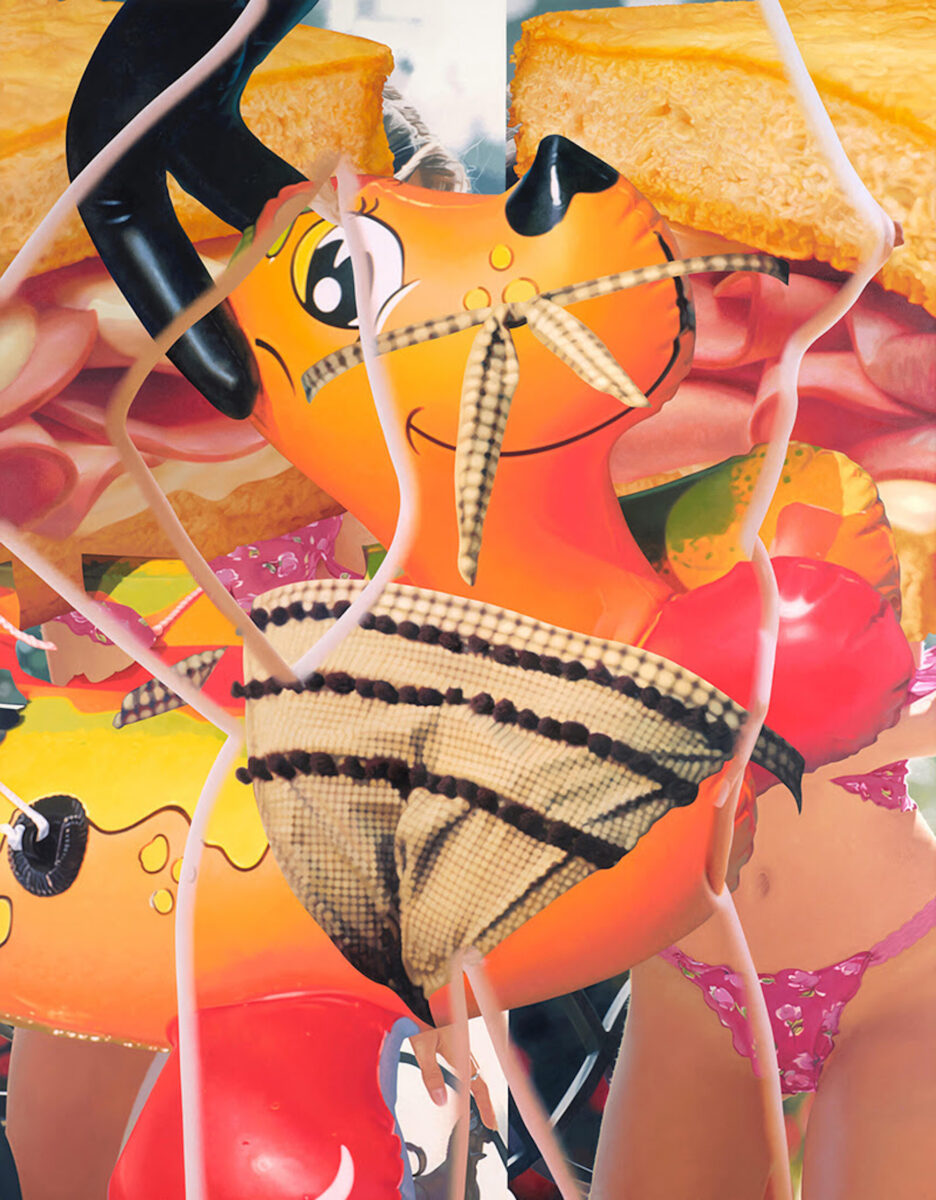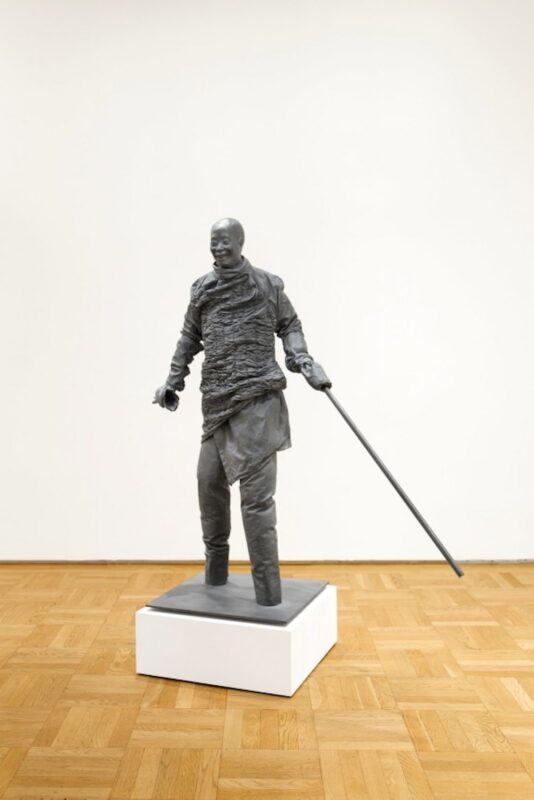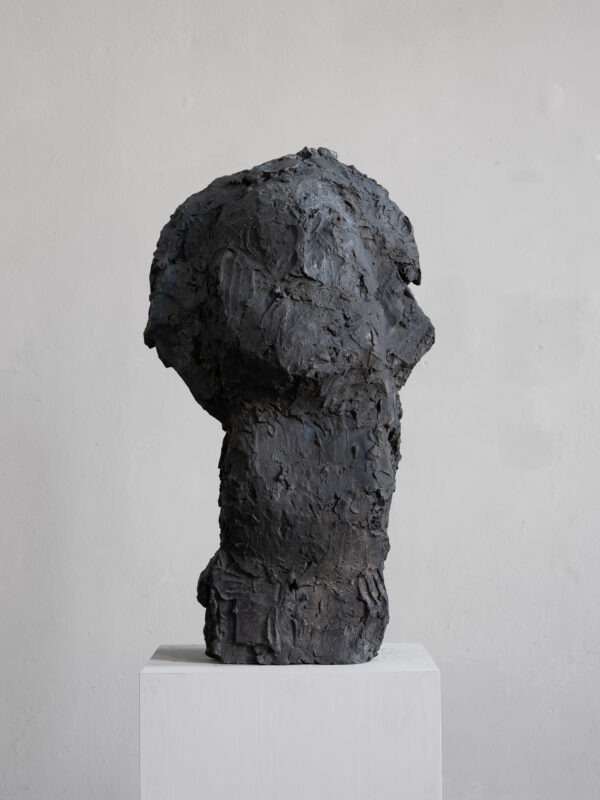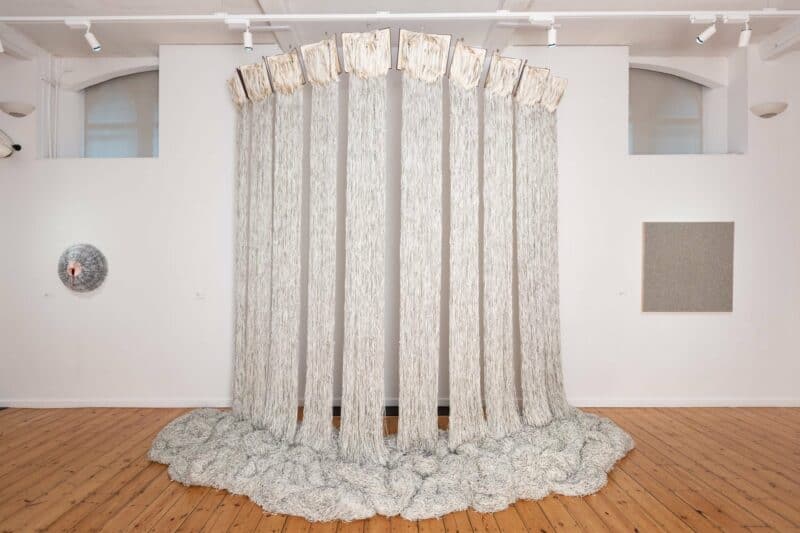His art may have landed on the moon but life carries on – on planet Earth for Jeff Koons.

Skarstedt is starting the spring season with a solo exhibition of the American artist Jeff Koons. Presenting five mural-sized paintings executed between 2001 – 2013, the exhibition features work from his Easyfun-Ethereal series first commissioned by the Deutsche Guggenheim, Berlin in 2000, alongside artworks from the Popeye and Antiquity series. Admired for his role in democratising the often-didactic culture surrounding art and its institutions, these works embody American democracy and break down the barriers between high and low art. This exhibition serves as a testament to Koons’s radical vision, following in the footsteps of innovators such as Andy Warhol and Marcel Duchamp.
At once alluring and chaotic, Koons’s Easyfun-Ethereal series is renowned for its combination of iconography from mass media and childhood nostalgia, interlaced with faint echoes from art history to exude energy and joy. Its genesis stemmed from the enthusiastic public response to the ultra-reflective sculpture Balloon Flower (Blue) (1995-2000) installed in Potsdamer Platz at the turn of the century, prompting the Deutsche Guggenheim to commission seven canvases for a landmark exhibition in 2000. Travelling around the globe to the Guggenheim Bilbao and New York awarded the series widespread exposure and a further seventeen canvases were created by 2002. Using images of food, landscape and the human form, Koons created spectacular compositions that celebrate desire, pleasure and consumerism. Unlike the Easyfun series (1999-2000) which exclusively draws from pure, childlike imagery, this body of work features a more adult lexicon as exemplified by the seductive bikini bottoms overlaying an inflatable cartoon dog in Hot Dog (2002). Pancakes (2001), on the other hand, offers a sensory overload, where pancakes and peas invoke senses of smell and taste, the hands of touch, and the landscape of sights and sound.
Working in thematic series since the late 1970s enabled Koons to develop narratives within bodies of work over a long period of time, creating continuity within his oeuvre. Traces of the Easyfun-Ethereal series are evident in the succeeding Popeye series, be that through the delightful icons of childhood nostalgia or the dystopic layering of everyday objects. Nevertheless, Popeye marks a new narrative for Koons, building on his seminal Inflatables series (1978-1979). Combining the surreal with popular culture, Koons casts inflatable pool toys in aluminium to preserve the folds distinctive of tumescent plastic. The cast is then smoothed, chased, sanded and painted to a trompe l’oeil effect. These wonderful inflatable characters reoccur throughout the Popeye paintings as seen in Monkeys (Ladder) (2003) which draws on the sculpture, Monkeys (Chair) (2003). The iconography stems from the toy game Barrel of Monkeys, a mass-produced source of entertainment that generations know and love. It is these shared histories sparked by symbols from childhood that interest Koons and constitute the Popeye series.
While influenced by Pop Art, Minimalism and Hyperrealism, Koons also holds a profound respect for ancient Greek and Roman sculptures, which the Antiquity series focuses on. Drawing on themes of fertility, love and beauty in Antiquity 1 (Grass) (2009–2011), Koons converts the Hellenistic sculpture group from 100 BC of Aphrodite with Pan and Eros into the central motif of the painting. The commanding canvas of over two and a half metres pulsates with a complex layering of image and sculptural reference. Likewise, the artist explores the darker side of society through Antiquity (Satyr) (2010- 2013). Entwining hues of forest greens tinged slightly brown, akin to a seventeenth-century landscape painting that has aged with the annals of time, Koons overlays the statue of Silenus (540–530 BC), a satyr from Greek mythology transporting the viewer to an imagined antiquity. The series underlines the crucial place that beauty and desire have in art, although, Koons also understands classical sculpture to embody aspirational values, enabling us to unlock our full potential as individuals and as a wider society.
With a career spanning over four decades, Koons’s preoccupation with the lavish elements of visual culture is a hallmark of his oeuvre. From his paintings to sculpture and everything in between, pleasure for Koons has always been paramount. As he noted in 2002, ‘You know, all of life is… just about being able to find amazement in things.’ The five monumental canvases on display in this exhibition explore the core components of his painterly practice whilst navigating art history, his personal history and shared histories.
JEFF KOONS: PAINTINGS, 2001 – 2013, 1st March – 25th May 2024, Skarstedt London









